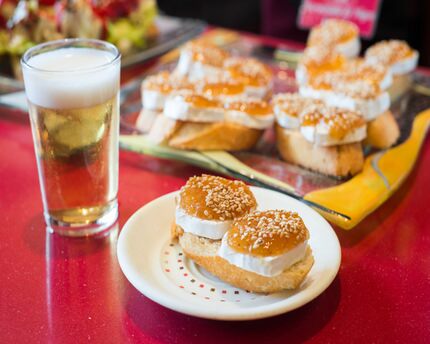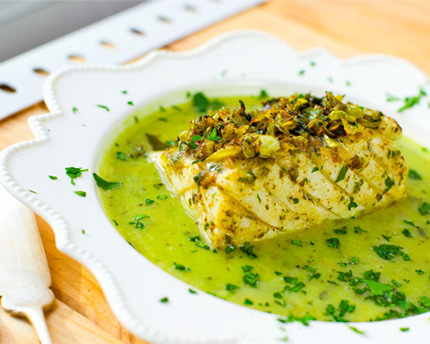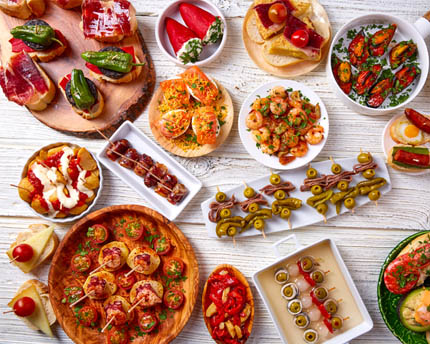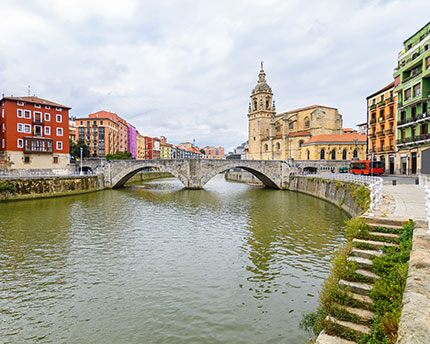San Francisco
Nestled in on the left bank of the Nervión river is the neighbourhood of San Francisco, part of the district of Ibaiondo and one of the three neighbourhoods that make up the area known as Bilbao La Vieja. La Palanca, Barrio chino, Barrio Rojo, Montmartre and Soho Bilbaíno are just some of the neighbourhood’s nicknames, giving you an idea of the character of an area that has always been the city’s most permissive; a home for merchants, working-class families and immigrants, as well as a stop-off point for Bilbaínos looking to finish off their night of revelry in one of the many night clubs and strip joints of the city’s “Barrio Alegre” (meaning happy neighbourhood in Spanish). Built on the site of a medieval Franciscan convent that disappeared in the nineteenth century, the neighbourhood is today based around two parallel thoroughfares, Calle San Francisco and Calle Las Cortes. Its former reputation as a poor, problematic neighbourhood has evolved to that of a bohemian and open place, where there is significant presence from the LGBTI community and numerous neighbourhood initiatives.
Whilst Calle de San Francisco was always known as the area’s most “bourgeois” street, with pretty buildings designed by prestigious local architects and performance venues such as the famous Salón Vizcaya—which no longer exists—the parallel Calle Las Cortes was the centre of nocturnal vice and transgression with Parisian-style brothels and night clubs. However, at the same time, it was also a residential area for the working class, the majority of whom worked in the iron mines of Miribilla, which closed in the 1980s. You can now visit the subterranean galleries through which the wagons loaded with ore travelled.
The process of gentrification of the neighbourhood of San Francisco over recent years has gone hand in hand with cultural projects such as BilboArte or the Church of the Convent of La Merced, a building dating from the seventeenth century that, after closing in the ‘80s, was acquired by the City Council to turn it into the BilboRock venue. The cultural centre has completely redefined the church, which is now a concert hall, theatre and cinema, in addition to housing several rehearsal rooms and the Musical Archive of Euskal Herria. These municipal projects are complemented by interesting neighbourhood initiatives self-managed by Espacio Sarean, a space located on Plaza Corazón de María, which houses a bar-restaurant and organises diverse cultural activities, from reading groups to cookery classes, to provide meeting places for the diverse range of nationalities that live in the area.
The neighbourhood is also home to emblematic places that recall the city’s industrial past such as the restored Plaza de La Cantera square, which in 1890 was the scene of the first general Biscay strike due to the abysmal conditions that the miners suffered, or the former La Ceres flour factory (1900), the first building in Spain to be constructed entirely in reinforced concrete, which was restored in 2003 and is categorised as a Place of Cultural Interest.
Nearby plans
Related plans

Bilbao en grupo: dos rutas culturales con sabor a pintxo y cerveza
Dos rutas culturales con las que conocer, junto a amigos y familiares, el espíritu y la historia de Bilbao al tiempo que se degusta la increíble oferta gastronómica que ofrece la ciudad.

Comida típica de Bilbao. Estos son los platos que debes probar
La gastronomía vasca es una de las más reconocidas mundialmente, muchos de los mejores chefs han salido de aquí. La cocina de Bilbao, más concretamente, cuenta con mucha personalidad y productos autóctonos y de calidad.

La ruta definitiva para ir de pintxos por Bilbao
Hay algo que está claro, en toda visita a Bilbao hay que reservar por lo menos un día para hacer una ruta de pintxos por la ciudad. Esta forma de comer o cenar es una experiencia que sólo se puede vivir si visitas el País Vasco, y sin duda, es una de las más auténticas para conocer realmente su esencia.


